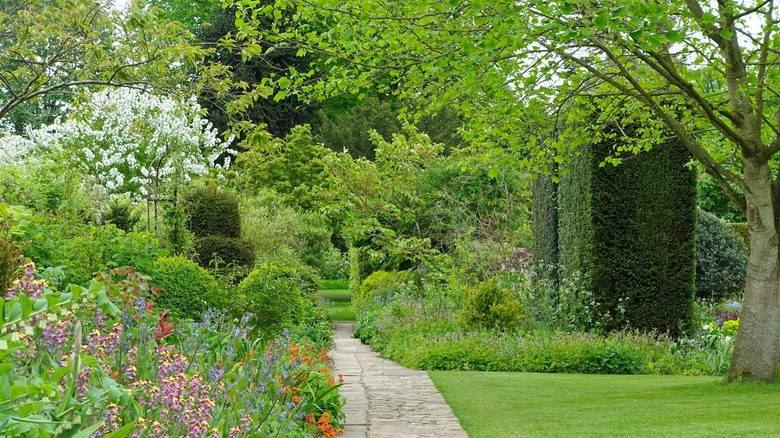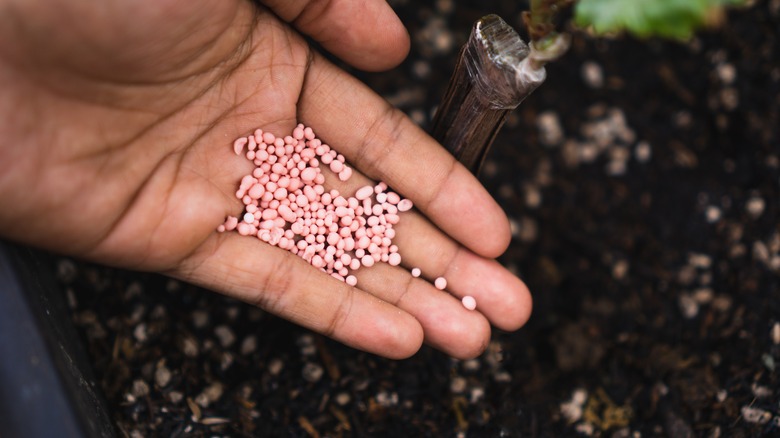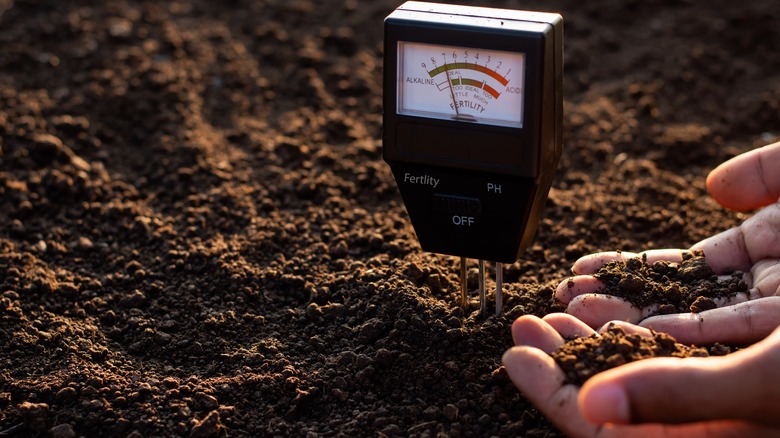How To Choose The Right Potassium Fertilizer For Your Leafy Friends
While gardening enthusiasts know about the benefits of adding potassium fertilizer to promote fruiting, flowering, and disease resistance, this essential nutrient is also important for your green leafy plants. Along with nitrogen and phosphorus, potassium is one of the three macronutrients that all plants need to thrive. That's why many gardeners like to make their own fertilizer teas to nourish their gardens. But, you need to choose the right potassium fertilizer for your leafy plants to keep them healthy.
The type of potassium fertilizer you choose will depend on a number of factors, including the type of plant you're growing, the nutrient content of the soil, and the time of year. In general, green leafy plants don't need high doses of potassium unless they're suffering from a deficiency, which is why doing a soil test is quite important. The time of year is also important because you should only apply fertilizer when the plant is in active growth or just starting to come out of dormancy. Otherwise, applying fertilizer is just a waste as it won't be taken up by the plant roots until the plant is actively growing. You should also note that potassium, along with phosphorus, is not mobile in the soil and needs to have contact with the plant roots so that it can be absorbed. There are a range of different fertilizers that you can use to give your plants extra potassium when they need it. Let's take a look at the more common ones.
Types of common potassium fertilizers
Potassium chloride, also known as muriate of potash, is the most common form of potassium fertilizer used around the world. However, care should be taken as using too much can cause your plant roots and leaves to burn. It's best used in a weak soluble form as per the recommendations on the package. Potassium sulfate is another common potassium fertilizer that also contains sulfur. It's most commonly used for growing crops such as potatoes. Other chemical versions of potassium fertilizers include potassium magnesium sulfate and potassium nitrate but these are not used all that often in home gardens.
Apart from these, there are also organic potassium fertilizers that are often preferred by many gardeners around the world. The most common organic materials that contain a good amount of potassium are wood ashes and seaweed. While wood ash is good for garden soil, it needs to be applied sparingly as too much applied over a prolonged period of time can increase the alkalinity of the soil. It's also interesting to note that only dried seaweed gathered from the beach has good levels of potassium because liquid seaweed products are heavily diluted. Many animal manures also contain decent levels of potassium but it's important that these are aged or well-composted before applying to your garden.
Which potassium fertilizer should you choose for your leafy plants?
Before you go ahead and purchase a potassium fertilizer for your plants, you should do a soil test to see whether the soil really is deficient in potassium. This should give you a good idea of what nutrients your plants need. Signs that your plants are desperate for potassium fertilizer could include leaves with yellow or brown tips and scorching around the edges, weak stems, and also drooping leaves. This is because potassium helps to strengthen plant growth.
Ideally, for leafy plants, it's better to apply a fairly balanced fertilizer that contains similar quantities of nitrogen, phosphorus, and potassium. This will give your plants all the essential nutrients that they need. But, if you find that your soil is deficient in potassium, you could just add a small amount of soluble potassium chloride or potassium sulfate. Follow the directions on the package so that you dilute sufficiently to avoid burning the roots. These soluble forms of potassium will be available to the plant roots immediately and you should see some improvement in the plant's health. An even better solution would be to scatter some wood ash over the soil and water it in. Or, if you have access to dried seaweed, apply this as a mulch over your soil. However, it might take a little time for the potassium to take effect when using these organic methods but they will continue to feed your plants over a longer period.


